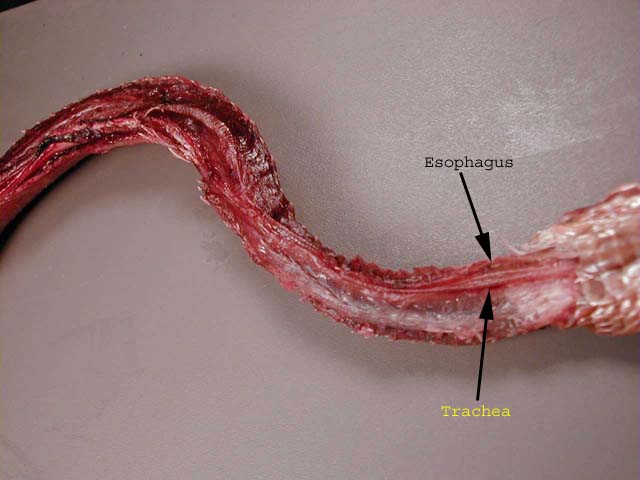
Digestive System of Copperhead Snake
The digestive system functions to break up and absorb the molecules and nutrients contained in the diet of the snake for use by the body for everyday functions (Kardong 2002). The snake digestive system is more generalized compared to other classes, such as the Canvasback Duck in the Class Aves. The teeth are used in obtaining food items through grasping or piercing. A well developed telescoping tongue on the floor of the mouth aids in locating prey (Zug et. al. 2001). A phylogenetic derivative of Duvernoy's gland, the venom gland produces digestive enzymes that are injected into the prey and begin the breakdown of the prey from the inside immediately. This helps speed up digestion and increase efficiency, allowing the snake to eat large prey. It also helps to clear the digestive tract quickly so the bulky prey does not interfere with lateral bends of the body during locomotion. The flexibility in the articulation of the snake’s jaw is used in engulfing large prey. Waves of contraction of the relatively long esophagus coupled with neck movements force the large bolus on down into the stomach. The stomach empties into the small intestine, which leads into the large intestine. From there the digested material enters the rectum, then into the colon, which exits thru the anus (Kardong 2002).

Different color text denotes system.
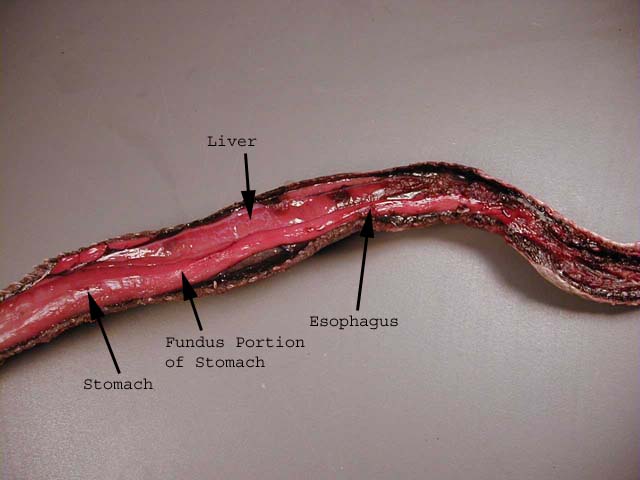
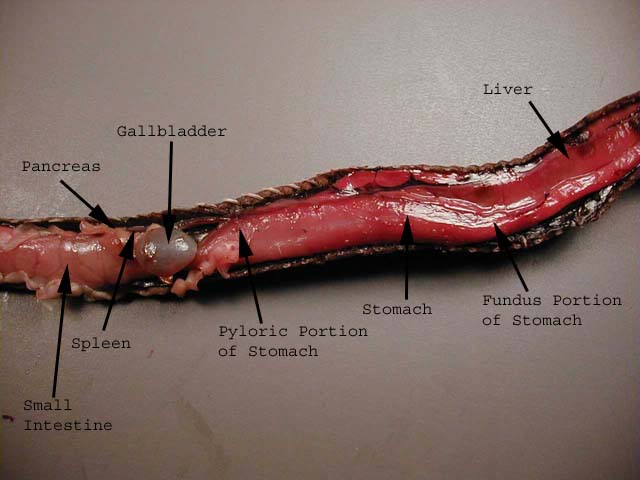
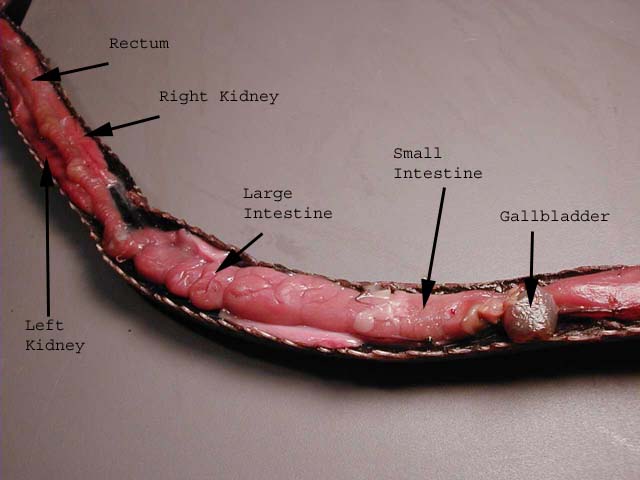
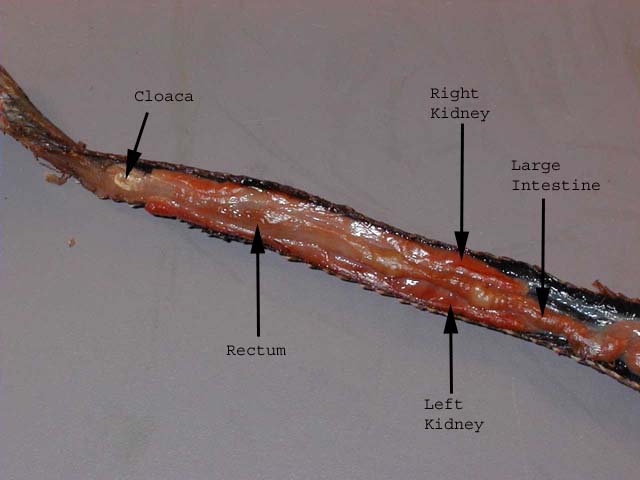
Stomach of the Copperhead
The stomach is the heavy muscular tube where food is mixed and digestive enzymes are added (Zug et. al. 2001). The glandular region of the stomach in snakes contains gastric glands and the two divisions: fundus and pylorus. The largest region of the stomach is the fundus, which contains the parietal cells and the chief cells that produce hydrochloric acid and proteolytic enzymes. The pylorus is the narrowest portion of the stomach and is the portion that enters into the small intestine. The pylorus produces secretions that help neutralize the acid produced by the fundus as the digested material enters the intestine (Kardong 2002).